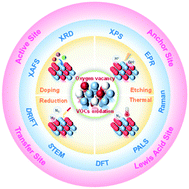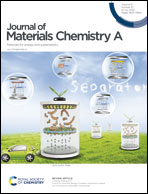Oxygen vacancies in a catalyst for VOCs oxidation: synthesis, characterization, and catalytic effects
Abstract
Volatile organic compounds (VOCs), as a significant contributor to atmospheric pollution such as ozone pollution and PM2.5, bring about serious harm to the environment and human health. Catalytic oxidation is one of the most promising technologies for achieving efficient VOCs removal, and the low-temperature performance of catalysts affects the removal efficiency. With the ongoing understanding of the catalytic reaction mechanism, oxygen vacancies can activate oxygen molecules, enhance electron transport, and regulate the surface chemical properties of catalysts, which has become one of the most effective means to improve catalytic performance. However, there has not been a detailed review of oxygen vacancy engineering for VOCs oxidation. This work systematically presented the recent progress regarding oxygen defect engineering in designing novel catalytic materials for VOCs treatment to fill in the gaps. Specifically, the core concerns in this review mainly concentrate on the in-depth discussion of the construction strategy, structural characterization, and catalytic effects of oxygen vacancies. Additionally, the technical challenges and prospects were forecasted. The perspectives provided in this review could potentially contribute to guiding the controllable synthesis of efficient catalysts for VOCs degradation and its corresponding mechanism understanding.



 Please wait while we load your content...
Please wait while we load your content...